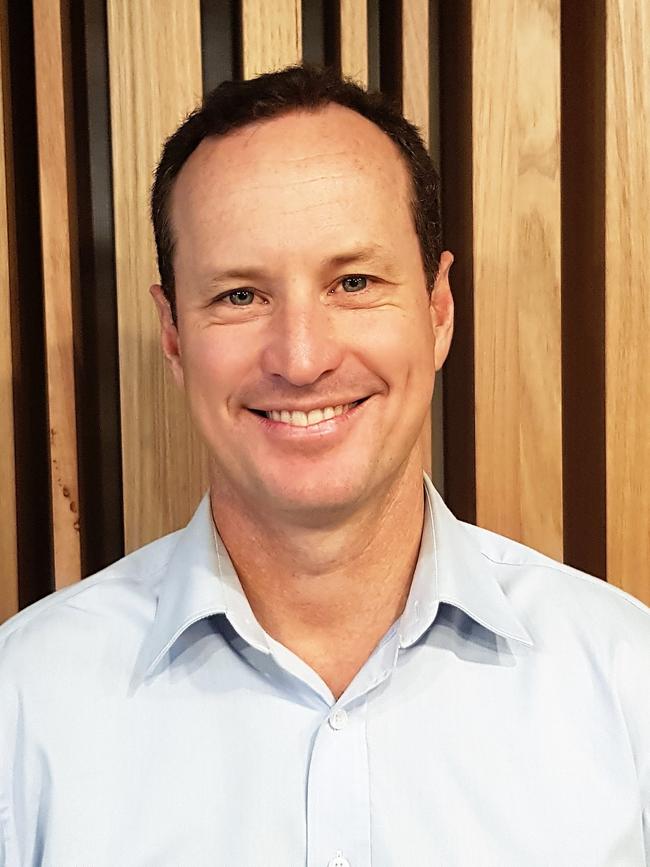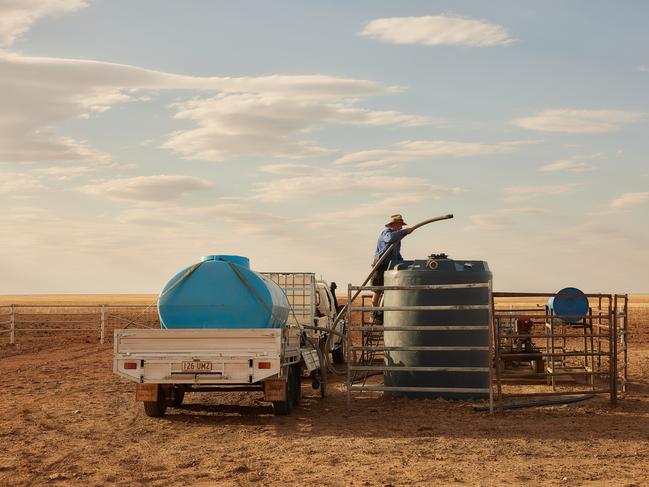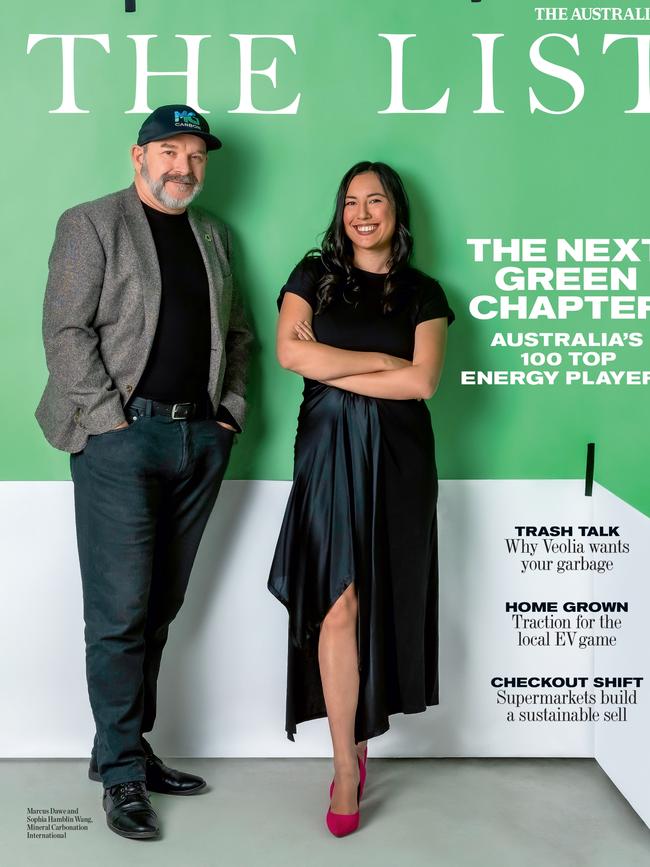Hurdles remain for livestock industry on path to net zero
Genetics and seaweed hold the keys to cutting methane from livestock, yet farmers still need to be convinced it’s good for business.

There’s a revolution under way in Australia’s livestock sector, but until recently it’s mostly taken place away from stockyards and paddocks. Now, it is happening in the laboratories and boardrooms of big companies, here and overseas. The innovations shaping the way we farm are coming from scientists, industry groups and corporations who recognised the issue some time ago and began to tackle the problem of methane emissions from cattle and, to a lesser extent, sheep.
Agriculture is responsible for about 13 per cent of Australia’s greenhouse gas emissions. About 42 per cent of these come from methane, produced when plant matter breaks down in the stomachs of ruminants.
Some graziers are focused on breeding low-methane traits in cattle but big corporations such as the North Australian Pastoral Company (NAPCO) and Australian Agricultural Company, which owns and operates Australia’s largest cattle herd, are trialling various products in their feedlots and, in a more limited way, open paddocks.
High on the list of feeds designed to reduce methane is asparagopsis, a native red seaweed that has gone from obscurity to borderline commercial reality with the backing of the CSIRO, Meat and Livestock Australia (MLA), and James Cook University. The race is on as the industry sets reduction targets and the federal government works to make good on its decision late last year to sign up to US President Joe Biden’s pledge to reduce global methane emissions by at least 30 per cent by 2030.

“Red meat can be produced really sustainably. It can be produced unsustainably as well, but in Australia we are really top performers in how efficient our production systems are and how sustainable we are,” says Margaret Jewell, environmental sustainability program manager at MLA. “It’s important because, as a globe, every industry has a role to play in trying to address the challenges of climate change.”
Lab tests have shown that a golf ball-sized quantity of asparagopsis fed daily to a ruminant could reduce methane emissions by up to 98 per cent. A recent trial in feedlots produced wildly varied results in methane reduction, from 30 per cent to 90 per cent. Either way, it’s a significant leap forward.
Five companies in Australia and New Zealand are licensed to sell the CSIRO-developed product. Each has made slight tweaks to growing, harvesting and delivery methods. It’s grown both at sea and in land-based tanks, but not yet in enough volume to supply the nation’s 74 million sheep or 27 million cattle.
Jewell sees asparagopsis as an important “part of the mix” of solutions being looked at to reduce methane. “There’s no silver bullet or single solution in this game,” she says.
“All of the technologies that we’re working on still aren’t quite ready to be a commercial reality, just because, for whatever reason, the costs aren’t quite where they need to be or there’s some additional due diligence and feasibility work that needs to be done for them to be viable for people to widely adopt. But they’re getting very close.”
While the laboratory testing has been promising, Jewell says testing in feedlot settings also produced “amazing” results.
The next challenge is to find an appropriate delivery mechanism to feed products such as asparagopsis to cattle while they’re in the giant paddocks that make up most of Australia’s livestock sector.

“In feedlots it’s [methane emissions reduction of] around the 90 per cent mark, but in grazing we’re anticipating it will be lower, probably around the 40 to 70 per cent mark,” Jewell says. “It’s still massive if you consider we’ve only got about one per cent of the national cattle herd at any one time in a feedlot.
“There’s a lot more animals running around in extensive grazing systems and if we can reduce their methane emissions by even 10 per cent, it is actually very substantial. If we can get that to lots of animals, we are making a contribution to our target.”
At the heart of MLA’s strategy is the acceptance that even a product that cuts all emissions will not be used by farmers unless they can see a benefit to their bottom line. “Reducing emissions actually goes hand-in-hand with improved efficiency, which equals improved productivity and improved profitability,” Jewell says. “Where we’re trying to get to … is to develop ways that we cannot only substantially reduce methane, but we can do so in a way that the energy that’s ordinarily lost as methane is actually converted into a lightweight gain.”
University of Queensland researcher Scott Spillias says seaweed is not only a nutritious food source for livestock and humans but also has the potential to benefit the environment by helping tackle climate change and improve global food security.
He says there are millions of hectares in the ocean suitable for commercial seaweed production, but he warns a big part of the challenge will be growing enough asparagopsis in a sustainable way to supply the livestock industry.
Another product being trialled in Australian feedlots is Bovaer, developed by European-headquartered DSM. The enzyme, more than a decade in the making, inhibits methane production in the rumen by up to 90 per cent with no noticeable effect on meat quality or taste. Bovaer is approved in 47 markets around the world, including all of the world’s biggest beef-producing nations.
Like asparagopsis, the amount of methane reduced by the enzyme depends on the animal’s base diet. In a feedlot setting the product, which can come in a pellet or powder form, can reduce methane emissions between 45 and 90 per cent. On a dairy farm, that figure is about 30 per cent. The company has worked with Coles, Mort and Co (owner of Australia’s largest feedlot) and NAPCO to test the products.
“It’s really now about scaling,” says DSM’s vice president of Bovaer, Mark van Nieuwland. “Then it’s about moving to some of the backgrounding [fattening] and breeding properties for the earlier stages of life.” Van Nieuwland says about 100,000 cattle are currently being fed Bovaer worldwide but he expects that to double or triple in the next year. A key challenge is identifying who will pay for the product along the supply chain and who can claim the carbon reduction.
He is confident farmers will be able to recoup extra costs along the chain or via governments via incentive schemes. “That just takes a little bit of time to set up, but thereafter I think the scaling can go pretty quickly.”
“With the global methane pledge, which the Australian government of course signed up to, the pressure will increase.”
Some companies, such as Danone in France, are setting specific methane-reduction targets alongside carbon dioxide-reduction targets.
“I think there will be other dairy and beef companies that will follow over time to align with that pledge,” van Nieuwland says.
He expects banks to follow suit: “Their loan book with dairy and beef operators is quite large, so they will also ask to understand, ‘What are you doing today and what are you going to do tomorrow?’.”
DSM has projects on large grazing properties in Australia trialling wider application, but it’s early days. “What I hear is encouraging,” van Nieuwland says. “From a research perspective, clearly we’re working on how we reach the next cow and I think we’re making great strides forward.”
NAPCO, one of Australia’s oldest companies with a herd of about 200,000 cattle spread across 6.1 million hectares of land, has been testing Bovaer in feedlots for a year. The company is proud of its sustainable farming methods on vast properties that mostly resemble a natural, wild state, but is conscious of the 400,000 tonnes of carbon dioxide equivalent that it emits every year, most of which comes from cattle.
“We’re doing all these wonderful things that we think are very important for the world, for humanity, but concurrently, we’re contributing to global warming, so we have to do something about that,” says Darryl Savage, NAPCO’s general manager of programs and innovation.

Bovaer results in NAPCO’s feedlots have been promising, but the feedlots only account for about nine per cent of their emissions. “That means about 90 per cent is coming from our cattle at pasture,” Savage says. “So that’s where our eyes are. We have to find a way of addressing those carbon emissions coming from our cattle that are grazing all these native pastures … things never happen as quickly as you’d like, but I’m confident it’s going to happen.”
Another product already on the market can reduce methane emissions in ruminants by up to 10 per cent, but it is its ability to get out into vast grazing paddocks that offers the most promise.
DIT AgTech’s uPRO BLUE offers a solution to the challenge facing sheep and cattle producers whose stock are so widely dispersed they cannot be handfed daily supplements to reduce their methane emissions. The company’s existing nutritional supplement delivery system is used to provide stock with Agolin, a product developed in Switzerland in 2006.
Tanks filled with the uPRO BLUE protein and phosphorus supplement are located next to watering troughs and can be remotely monitored and controlled. DIT AgTech is also working with Central Queensland University and MLA to test a greater range of methane-reducing compounds, including asparagopsis, to determine whether they can safely and consistently be given to cattle via automated watering systems.
Toowoomba-based Vivienne McCollum, who is leading the three-year project, says it has produced promising results in the laboratory.
“We took 32 methane-reducing compounds and combined them with our urea and phosphorus products,” she says. “We tested their solubility and stability under different environmental conditions and also their methane-reducing abilities. We had some really positive results out of that.” The products are now being tested with cattle outside the lab.

The system can also monitor and measure how much the stock have been drinking, which can potentially be used for carbon-reduction accounting, offering solutions to producers wanting to offset costs through carbon credits or by setting themselves apart in the consumer market by offering “low-methane” meat.

“There are many effective additives which can be easily fed to stock in a controlled situation like a feedlot or a dairy, but 92 per cent of Australia’s [27 million] cattle are on extensive grazing lands,” McCollum says. “If we’re truly going to make a significant impact on slowing carbon emissions, we need to be able to feed it to those animals. We believe we’ve got a viable delivery mechanism to be able to feed methane-reducers to a large number of animals in very remote areas all year round.
“That’s the really hard bit.”
More Coverage




To join the conversation, please log in. Don't have an account? Register
Join the conversation, you are commenting as Logout